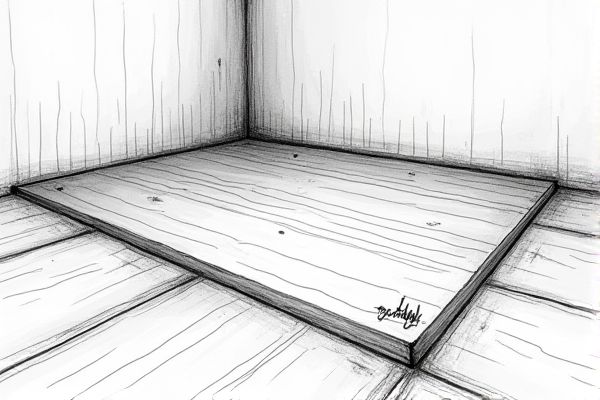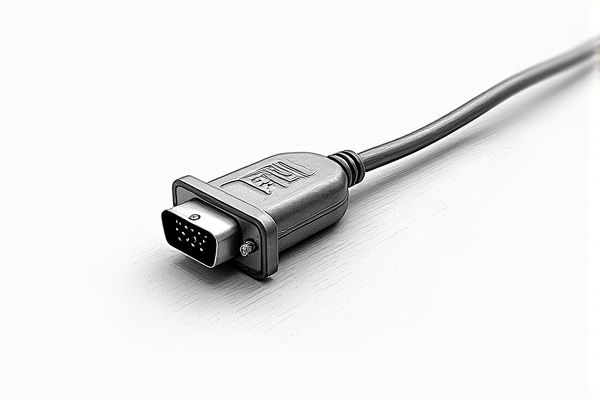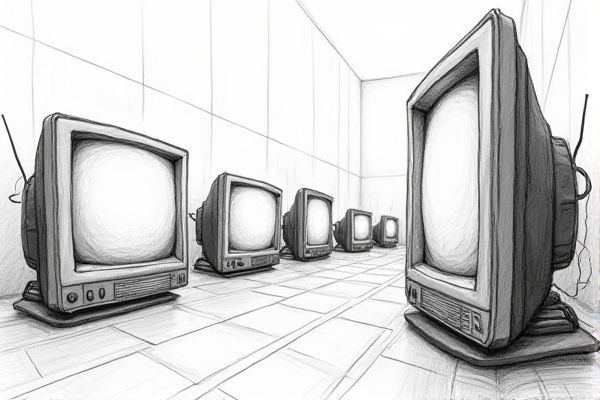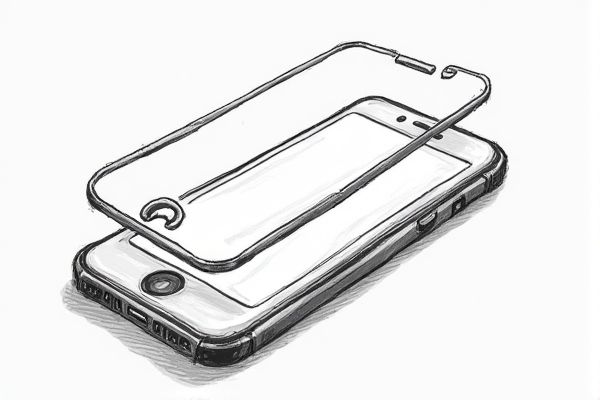The resurgence of nostalgic media has brought the VCR, or Video Cassette Recorder, back into the spotlight, with many consumers seeking out the best brands for reliability and quality. Brands like JVC, Panasonic, and Sony have long been revered in the VCR market for their durability and innovative features, offering models that cater to both casual users and dedicated collectors. Mitsubishi and Toshiba also made a name for themselves, delivering models that boast user-friendly interfaces and crisp playback quality. To explore a comprehensive list of the best VCR brands and what makes them stand out, see below.

Illustration of vcr
Best brands of vcr in 2025
Panasonic
Panasonic, although not the dominant player in the VCR market, was a significant participant in the videotape format war, particularly as a licensee of the VHS format. VHS, which Panasonic and other companies like JVC, RCA, and Magnavox supported, eventually captured 90% of the VCR market in the United States by 1987. Panasonic's involvement in VHS helped in making the format widely available and affordable, with VHS VCR prices dropping to under $300 by 1986. This strategic move contributed to the decline of Betamax, which held only 7.5% of the UK market by 1986. Panasonic's role in the VHS success story highlights its adaptability and market savvy in the consumer electronics industry.
Sony
Sony is renowned as one of the leading producers in the VCR market, particularly notable for its aggressive strategy in the Beta format camp. By 1979, Sony contributed to the annual industry production of home-use VCRs in Japan, which reached 2.2 million units, a significant increase from the 1976 volume. Despite the dominance of VHS, Sony maintained a market share of around 11.5% in the global VCR market by the early 1990s. The company's commitment to enhancing picture quality, lengthening recording time, and diversifying product functions was key to its success. Sony's innovative approaches, including the introduction of 8mm formats for compact personal use, helped it posture as a comprehensive VCR manufacturer. To learn more about Sony's pioneering advances and history, visit their official history page.
JVC
JVC emerged as a leading producer of VCRs, dominating the home market with its VHS, Super VHS, and VHS-C formats for over 40 years. By 1980, VHS had captured 60% of the North American market, and by 1987, it accounted for 90% of the VCR market in the United States. JVC's success was fueled by consumer preferences for longer recording times and lower retail prices, as well as the format's widespread compatibility and brand loyalty. The company collected billions in royalty payments from its VHS technology. JVC's partnership with other major brands like RCA, Magnavox, and Sharp further solidified its market position. For more insights on this topic, visit the Videotape Format War page.
Toshiba
Toshiba, although not the dominant player in the VCR market, was a significant participant in the industry. The company's roots date back to 1875, and it was involved in various innovative products, but in the VCR sector, Japanese companies like Matsushita, JVC, and Sony led the market. By 1991, Japanese companies, including those associated with Toshiba, contributed about 72% of the global VCR production, with Toshiba being part of the broader landscape of Japanese electronics giants. However, Toshiba's specific market share in VCRs was not as prominent as that of its competitors. The global market for VCRs was largely dominated by the VHS format, with VHS accounting for 90% of the U.S. market by 1987. For more detailed insights into Toshiba's history and contributions, visit their official corporate history page.
Mitsubishi
Mitsubishi, as part of the VHS family, played a significant role in the videocassette recorder (VCR) market. In the late 1970s and early 1980s, Mitsubishi, along with JVC and Matsushita, formed a strong alliance to support the VHS format, which eventually dominated the market. By 1978, VHS had surpassed Betamax in sales, with Mitsubishi and its allies contributing to this success through their mass production and distribution capabilities. Mitsubishi's involvement helped VHS capture a significant market share, with VHS sales outpacing Betamax by a ratio of four to one by 1984. This strategic alignment and production capacity were crucial in establishing VHS as the leading home video format. For more details on Mitsubishi's role in this historical development, visit their group history overview.
Hitachi
Hitachi, as part of the broader Japanese electronics industry, played a significant role in the VCR market, although it was not the leading brand in VCR production. In the late 1970s, Hitachi, along with other major companies like Sharp and Zenith, had not initially committed to home video development, but later joined the market. The VHS format, supported by JVC and Matsushita, dominated the market, with VHS capturing nearly 60% of color TV sales in Japan by 1976. Despite this, Hitachi's involvement in the electronics industry contributed to the overall growth and innovation in consumer electronics. By 1978, annual production of home videocassette recorders in Japan exceeded one million, with Japanese firms exporting a significant portion of these units. For more information on Hitachi's offerings, visit their storage platforms page.
Sharp
Sharp, although not primarily known for its VCR production, was one of the major consumer electronics companies involved in the early development of home video technology. However, it did not commit to any specific format like Betamax or VHS in the initial stages. By the late 1970s, other companies like JVC and Matsushita had dominated the VCR market with VHS, leaving Sharp and others to follow. Sharp's focus shifted more towards other innovative products such as LCD TVs, solar cells, and mobile phones. Despite this, Sharp's contributions to consumer electronics are significant, including the development of the first commercial camera phone in 2000 and the world's first 8K resolution TV in 2015. For more information, visit Sharp Corporation's Wikipedia page.
Zenith
Zenith, although initially supporting the Betamax format, played a significant role in the VCR market. However, it was the VHS format that ultimately dominated, with Zenith and other companies like RCA and Hitachi switching to support VHS due to its longer recording time, which was a crucial factor for consumers. By 1978, VHS outsold Betamax every year, and by 1984, VHS sales were four times those of Betamax. Zenith's decision to stop producing Betamax in 1983 marked a significant shift in the market, contributing to VHS becoming the de facto standard. This strategic maneuvering and market dynamics led to VHS capturing a dominant market share. Learn more about the evolution of their technology on their official website.
Philips/Magnavox
Philips, through its acquisition of Magnavox, played a significant role in the consumer electronics market, particularly in the development and production of videodisc players. Although Philips did not dominate the VCR market with its own format, it contributed to the industry with its Magnavision videodisc players, which offered advanced features like random access and high-density information packing. However, in the VCR format war, Philips' efforts were overshadowed by the rivalry between Sony's Betamax and JVC's VHS, with VHS ultimately gaining a dominant market share of 90% in the United States by 1987. Philips' market share in color television in Europe was less than 25% as of the late 20th century. Despite this, Philips remained a key player in consumer electronics.
Samsung
Samsung Electronics has a notable history in the VCR market, achieving significant milestones such as developing the world's first dual-deck VCR in 1990, which featured an innovative "artificial intelligence" and an x180 speed. By the 1990s, Samsung held a 15.8% market share for VCRs in Korea and expanded its production to China through the establishment of Tianjin Samsung Electronics Company in 1992. Their VCRs were highly regarded for quality, productivity, and performance, gaining popularity globally. This period marked a crucial phase in Samsung's growth as a leading electronics manufacturer. The company's advancements in VCR technology contributed to its reputation as a pioneer in consumer electronics. For more insights into their achievements, visit the official Samsung Newsroom.
















Leave a Reply
Your email address will not be published.